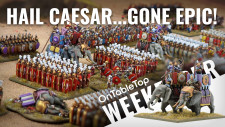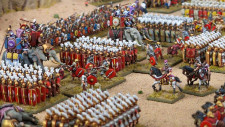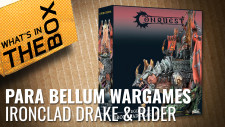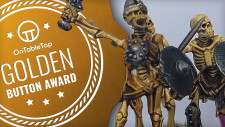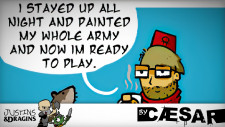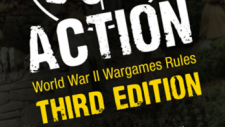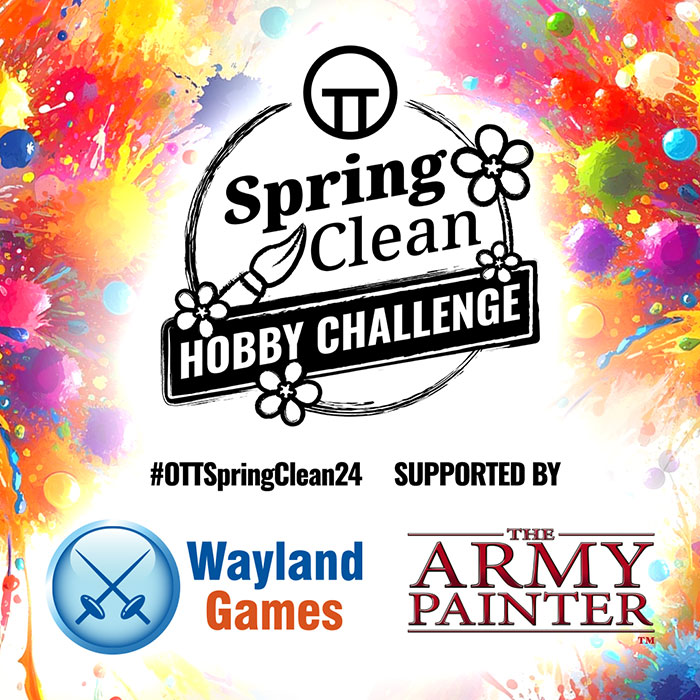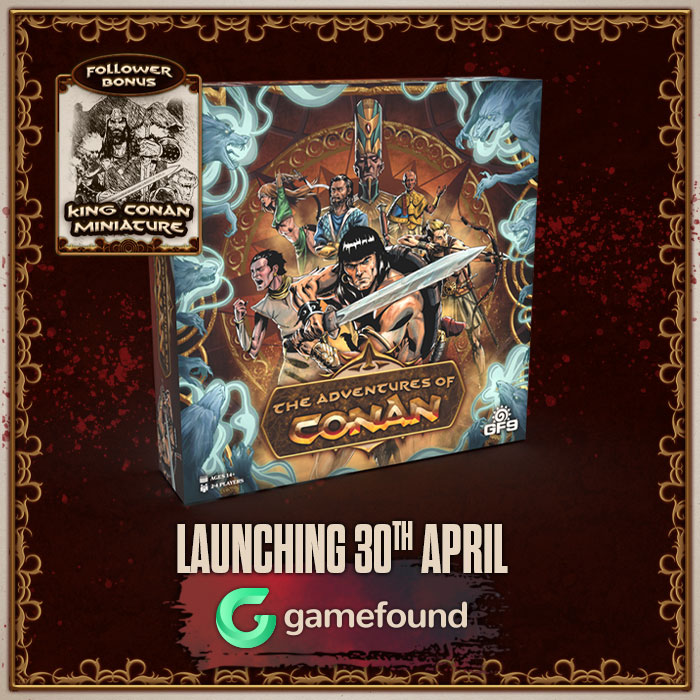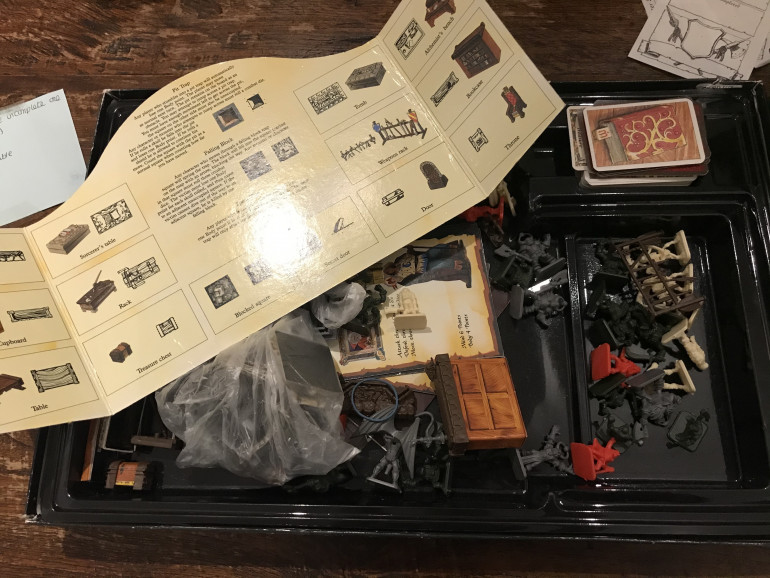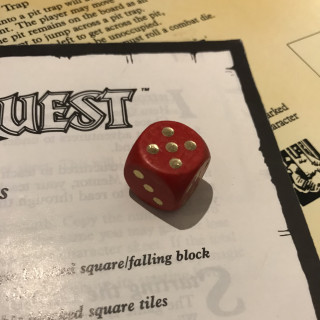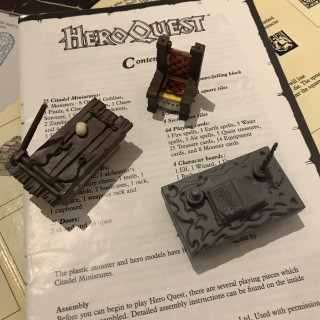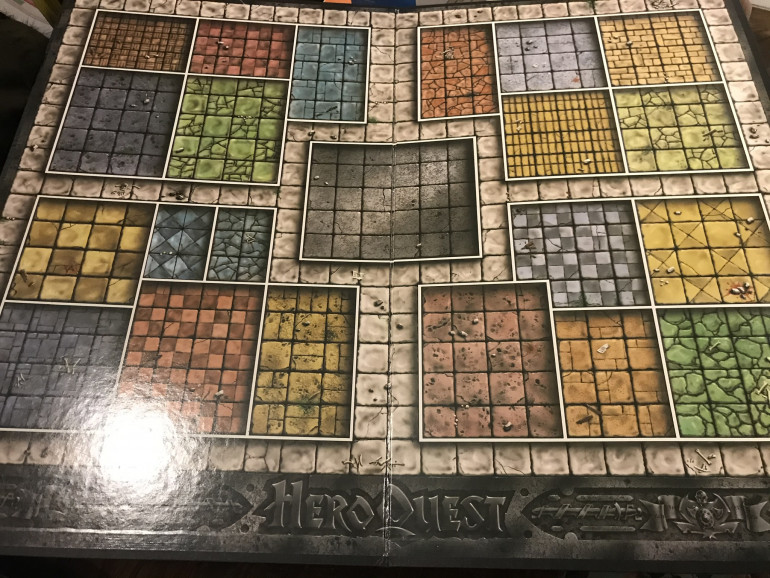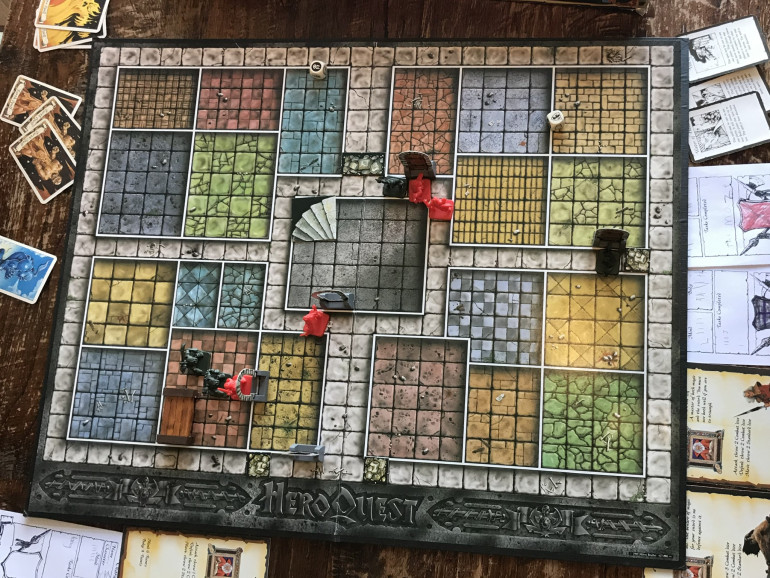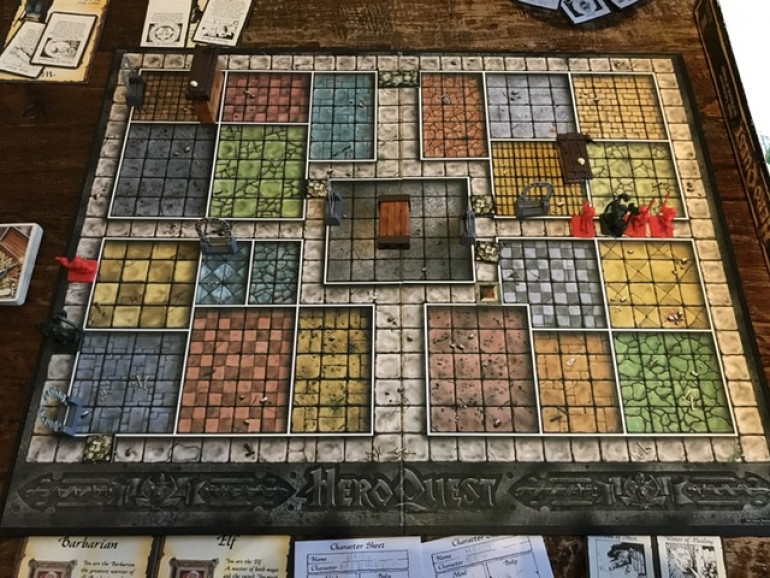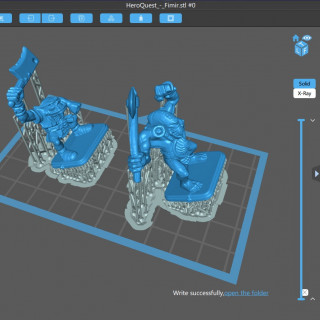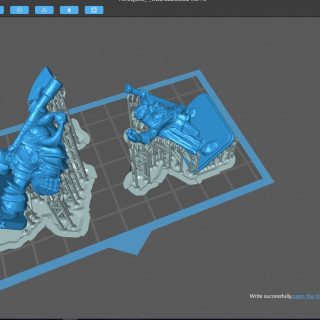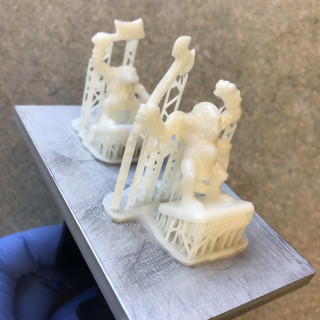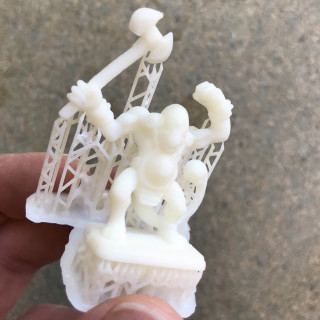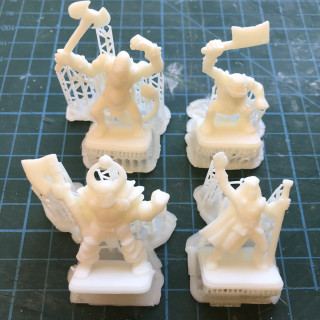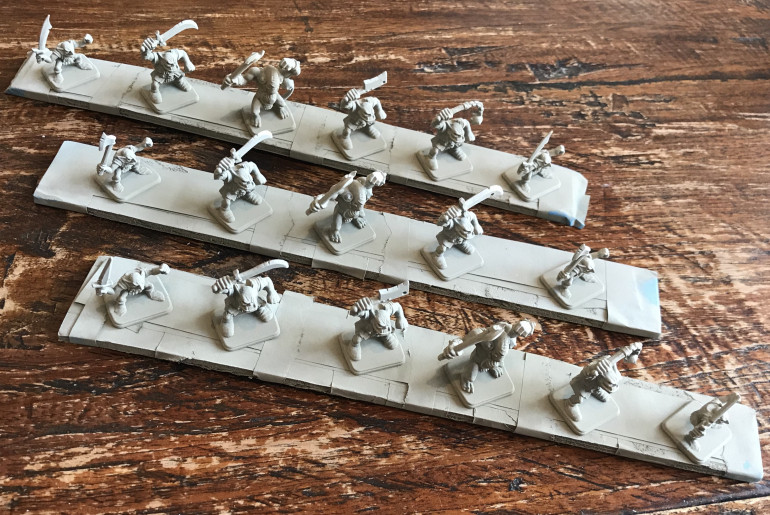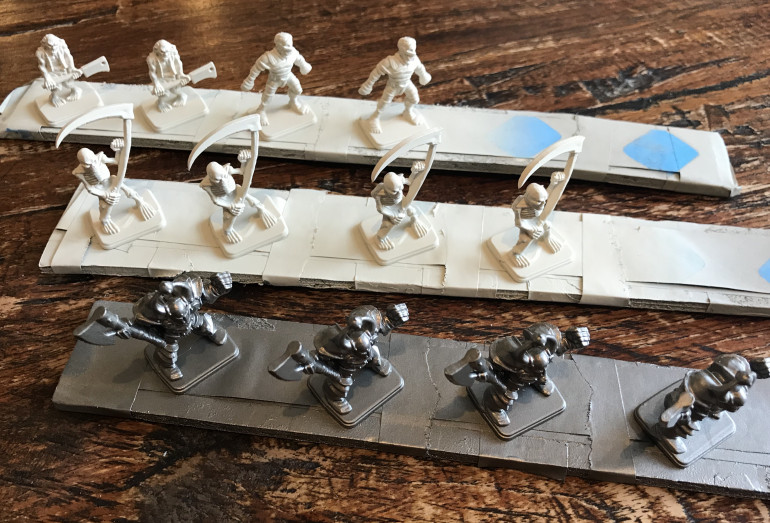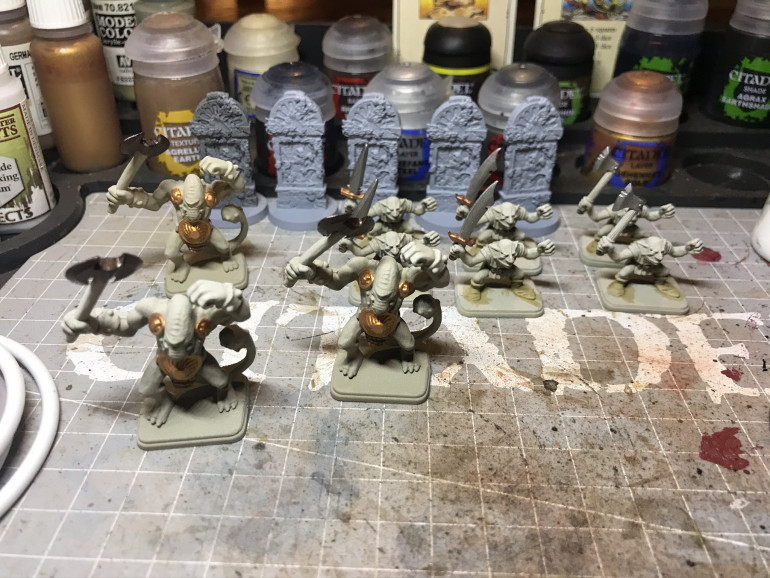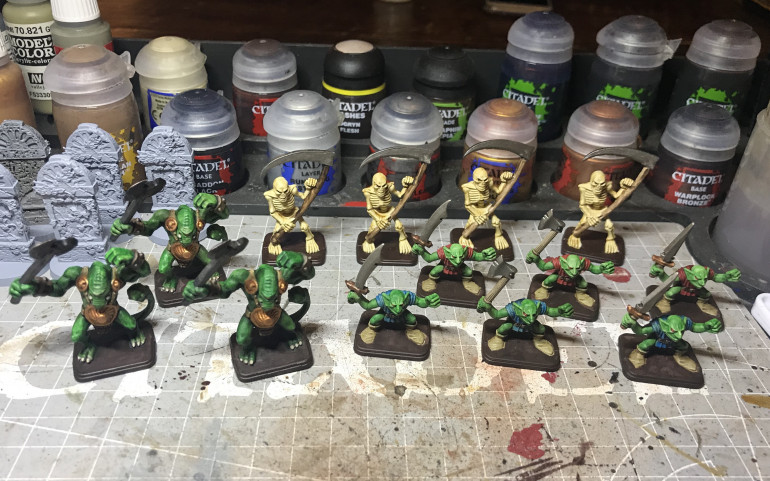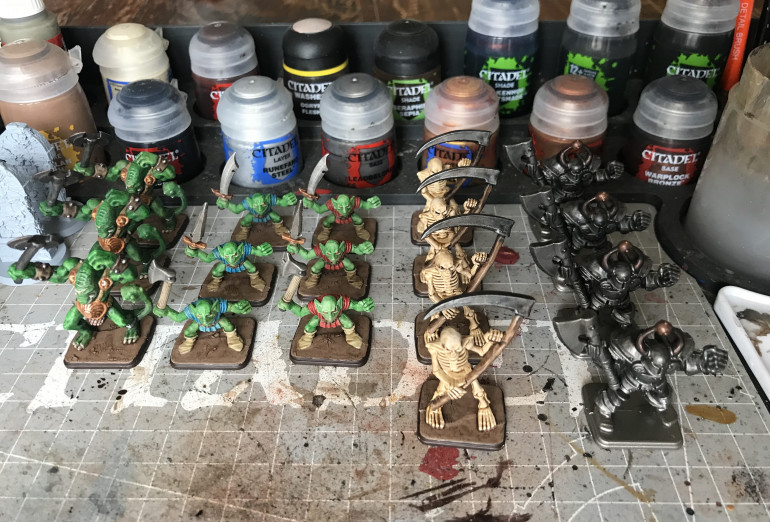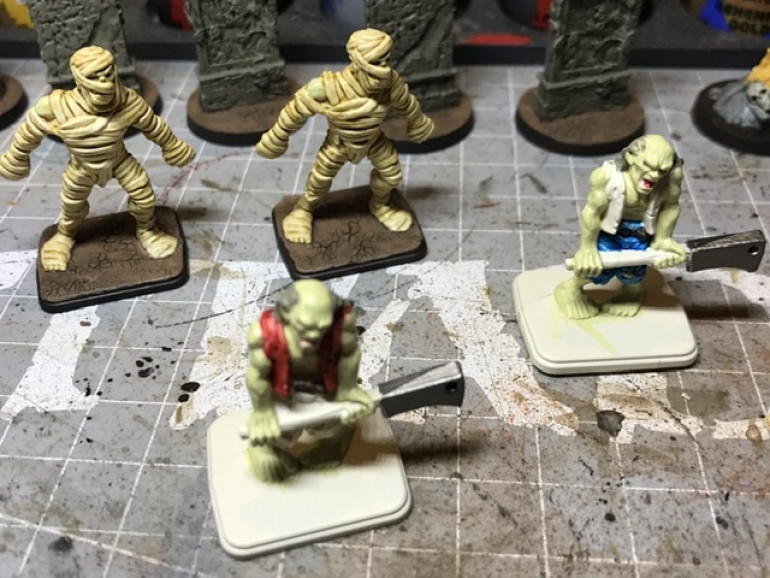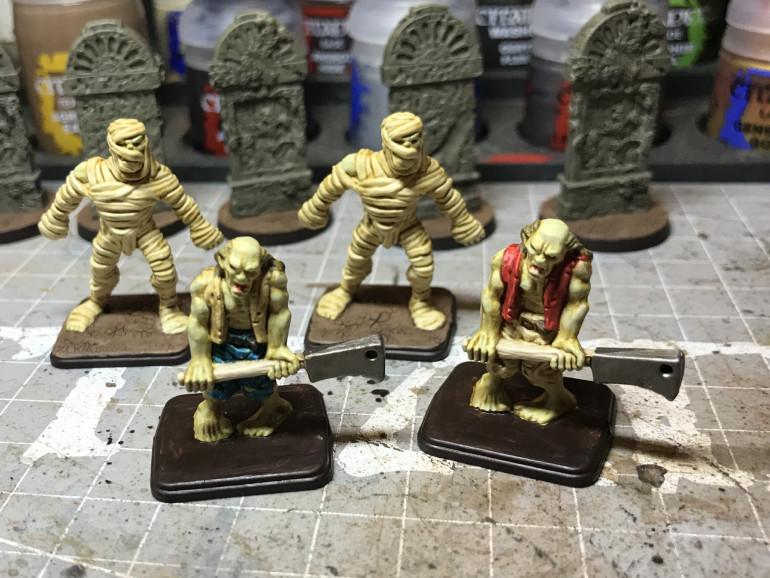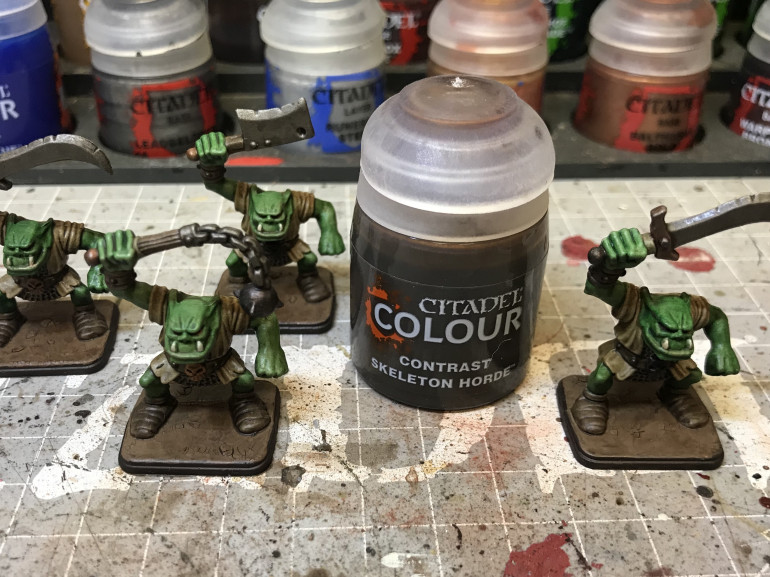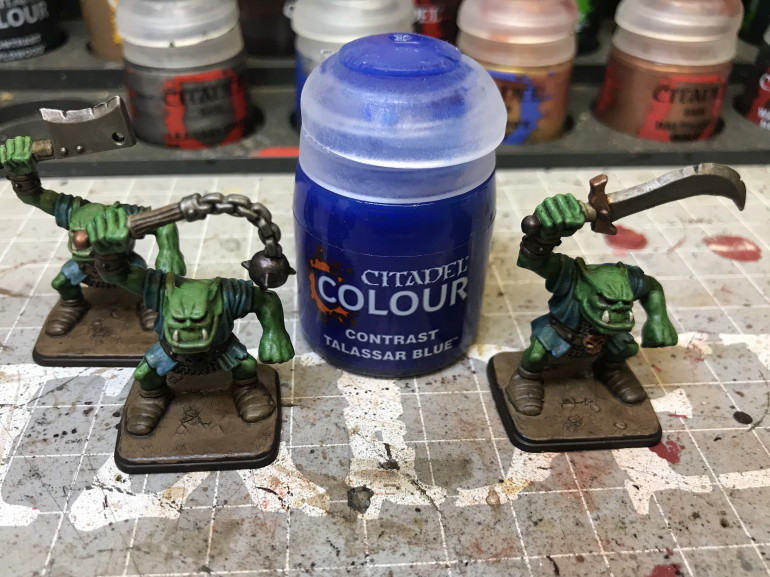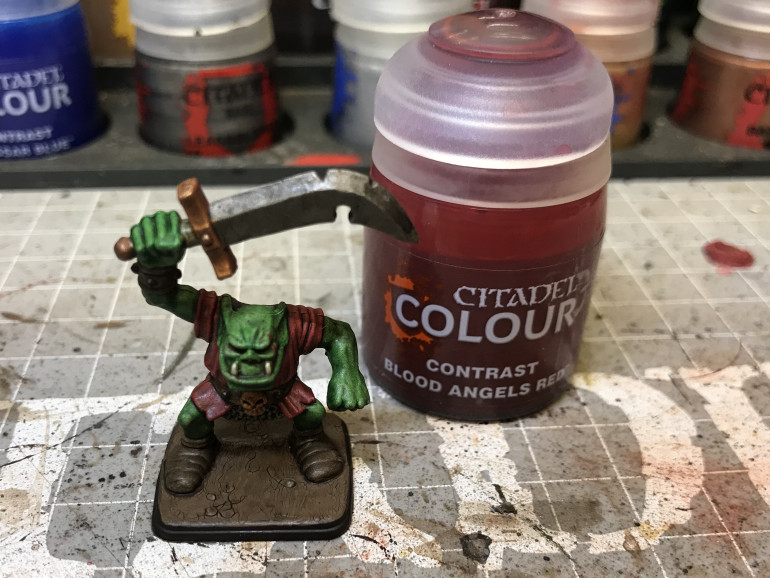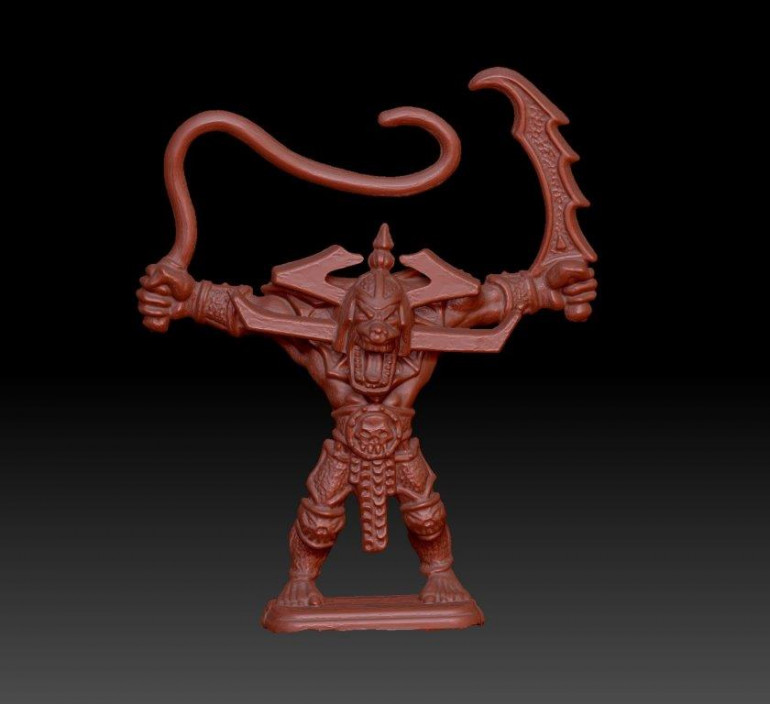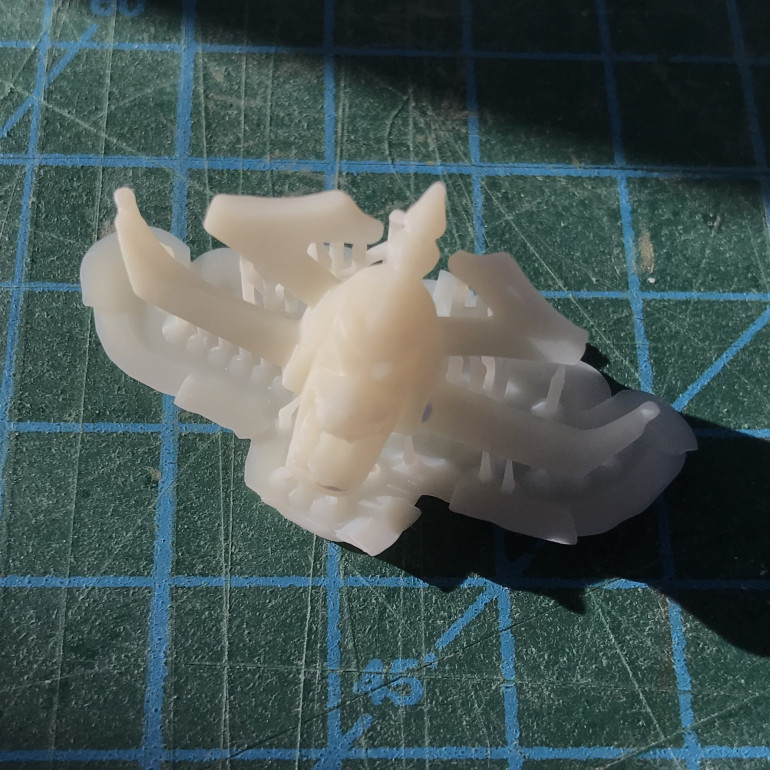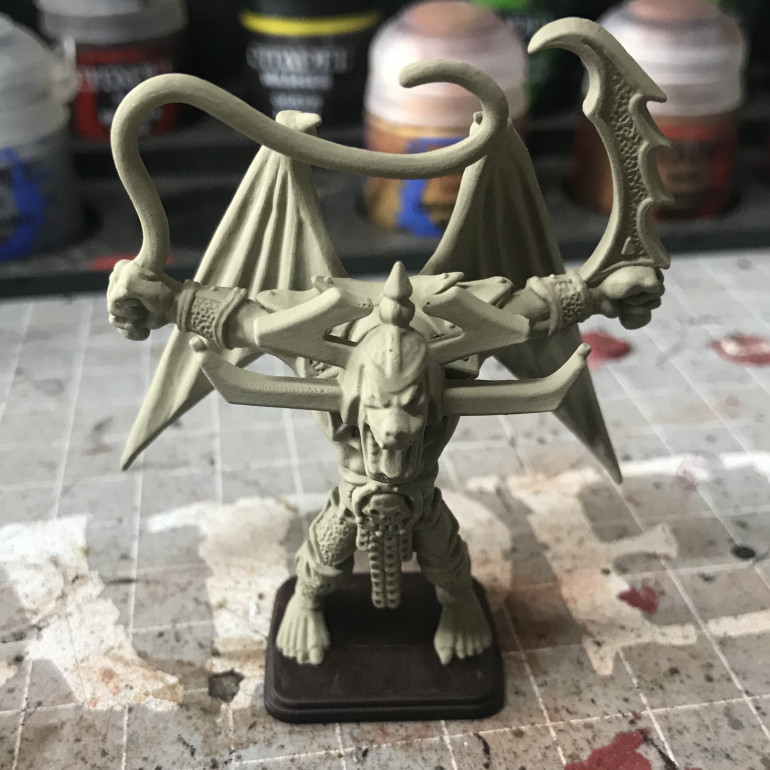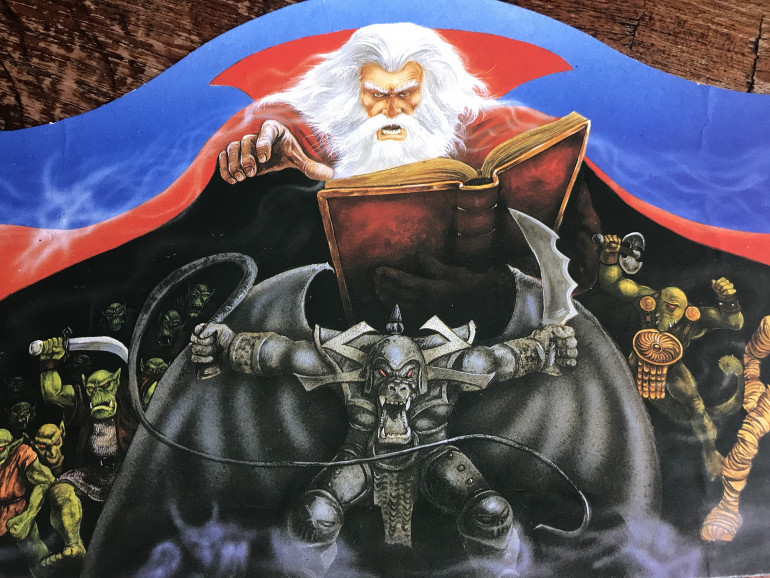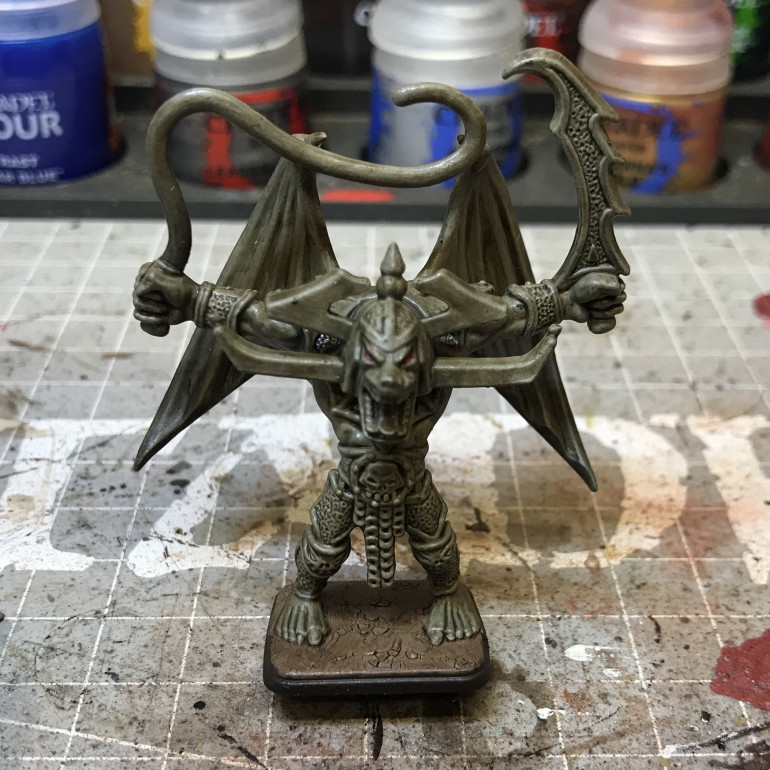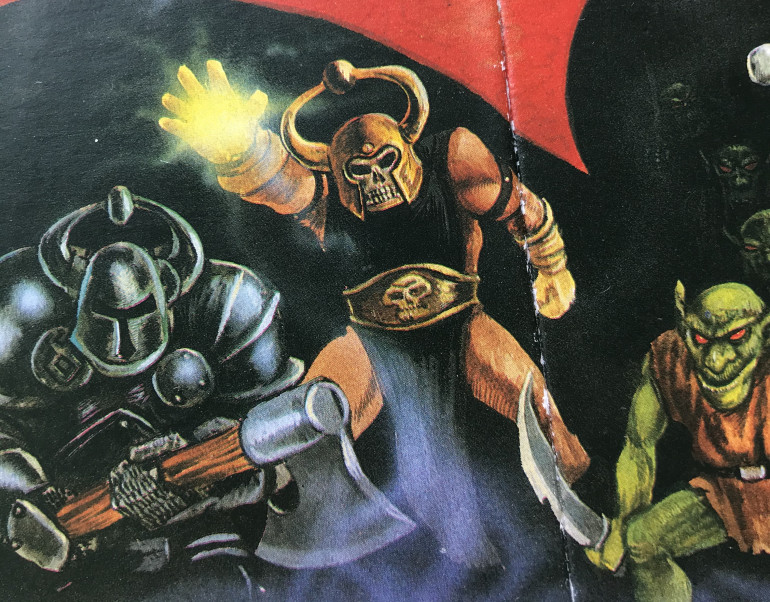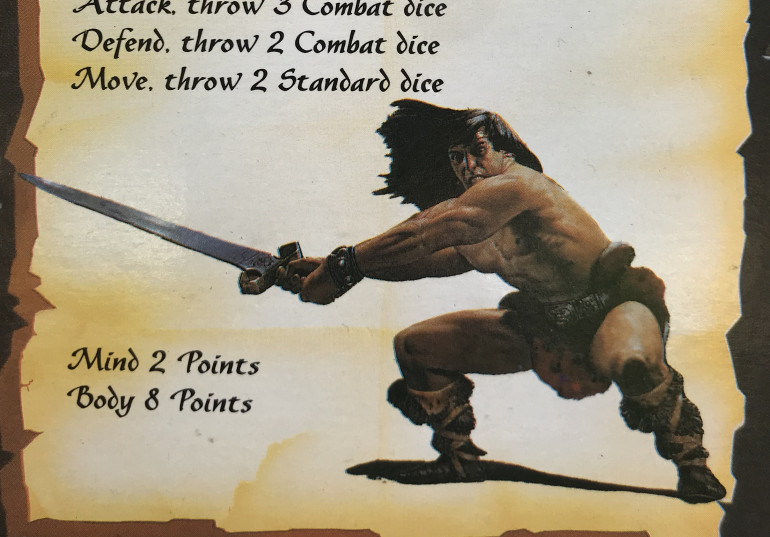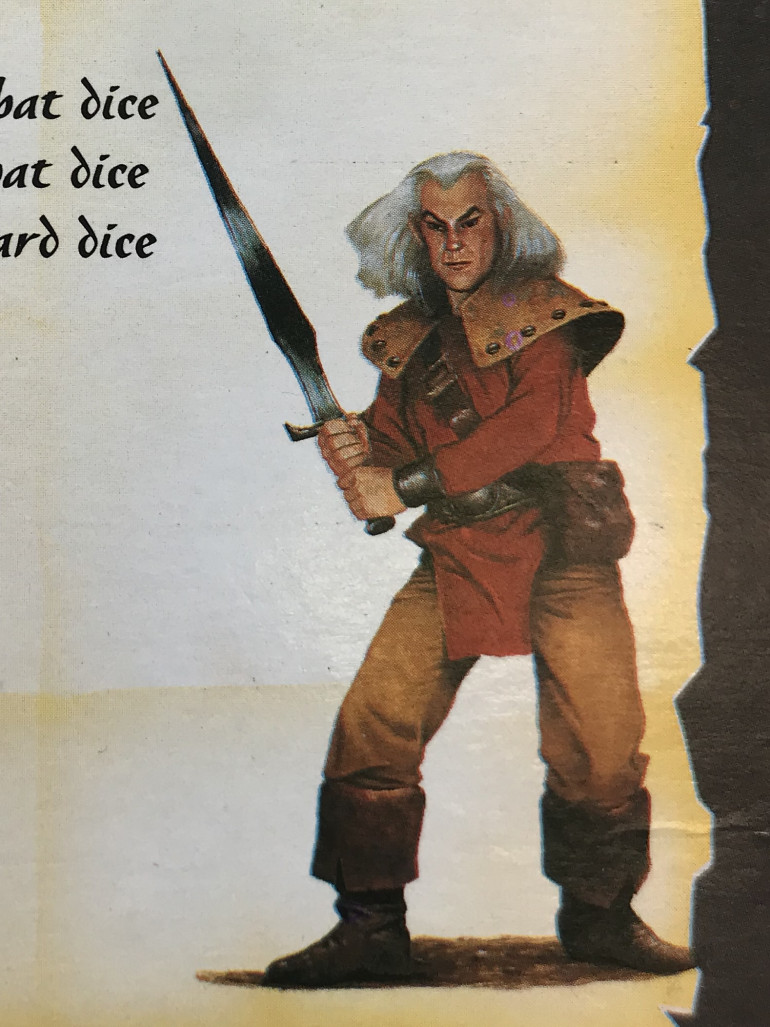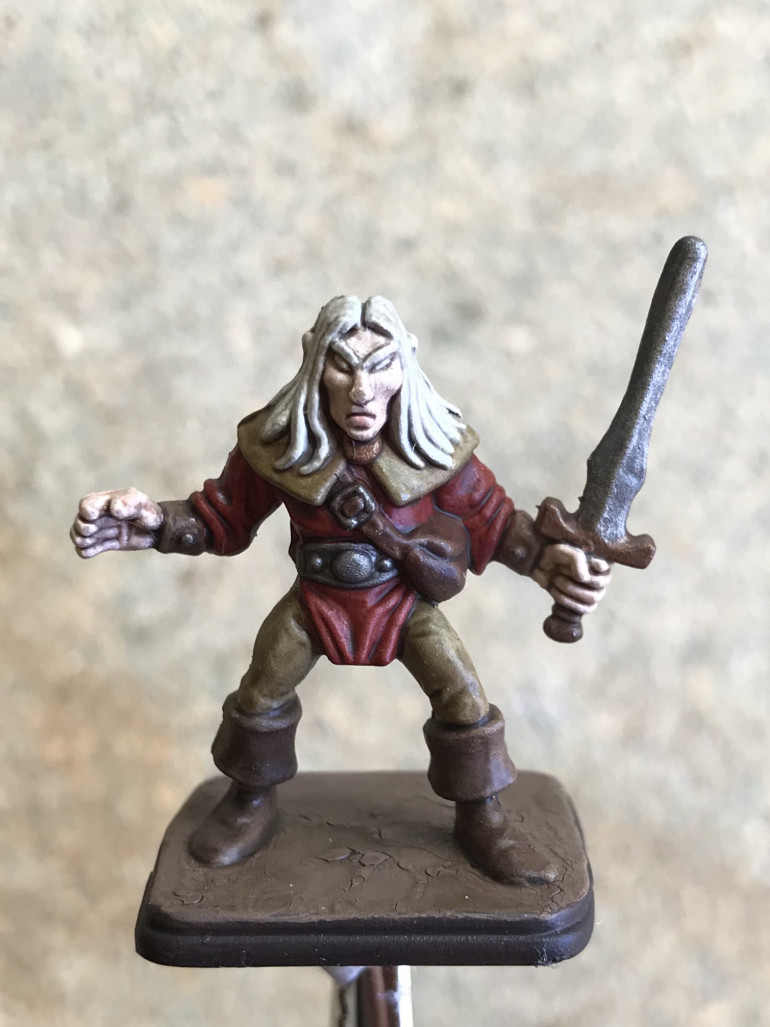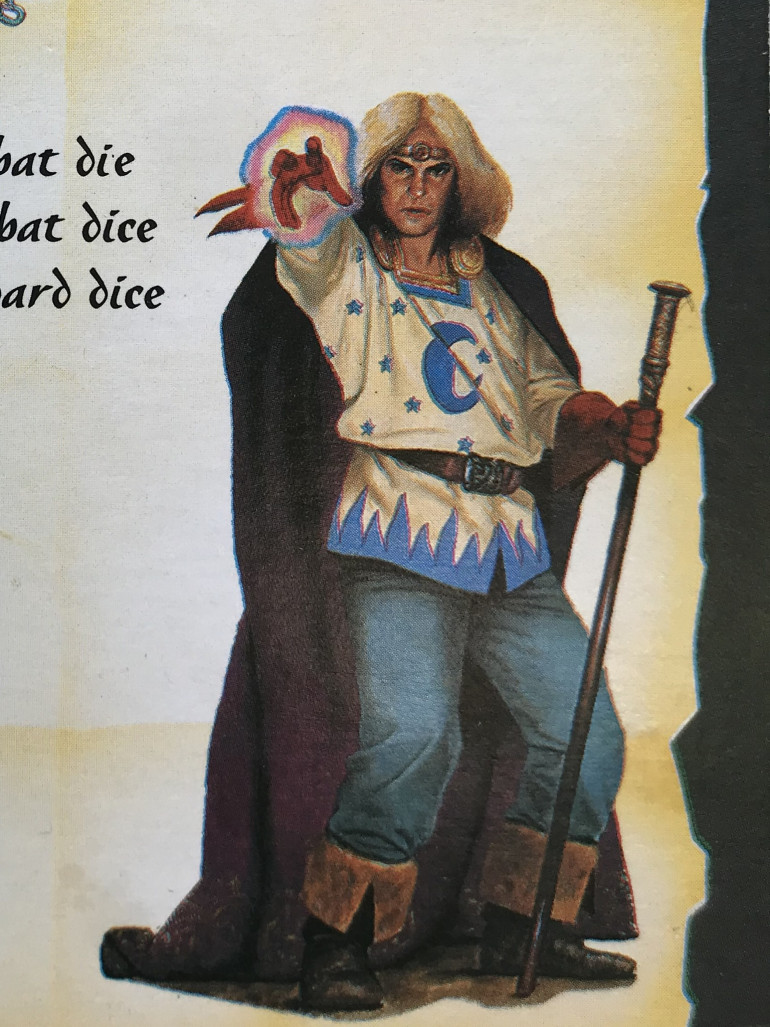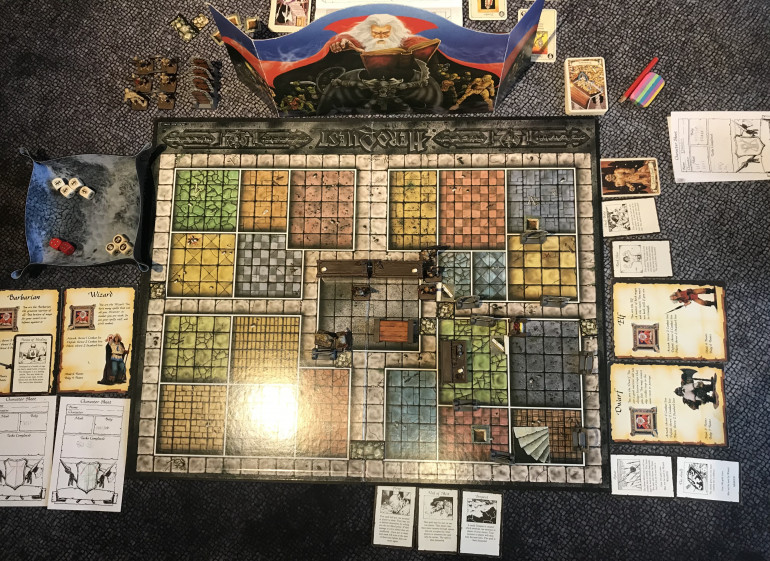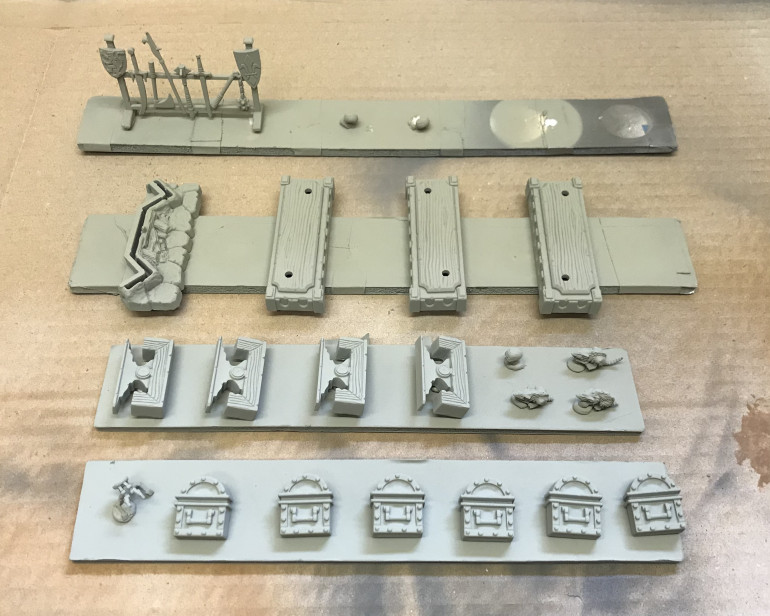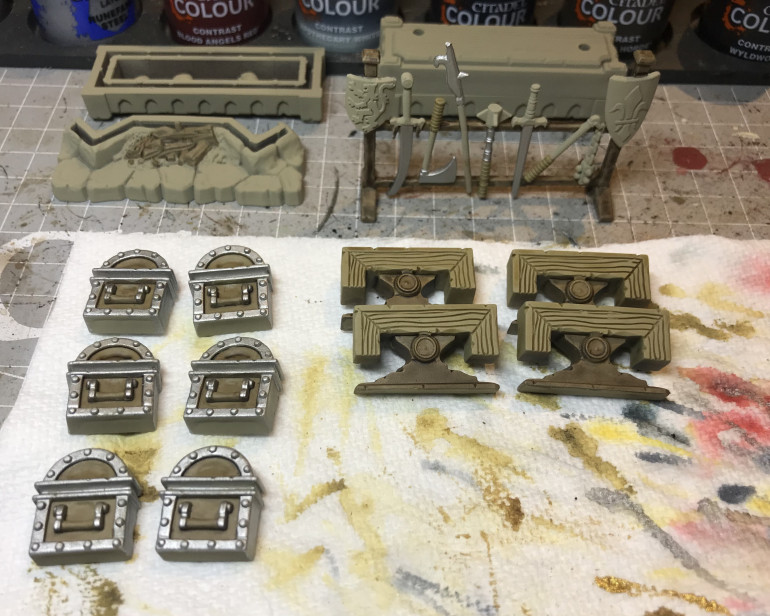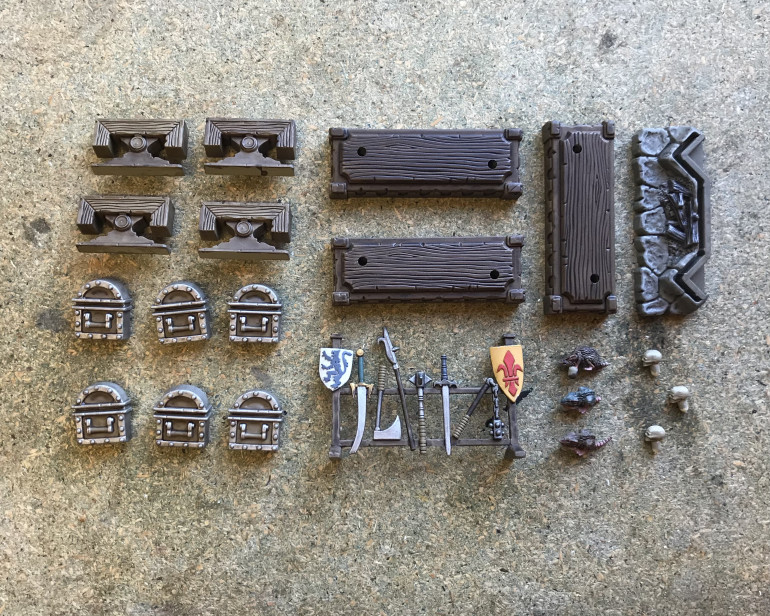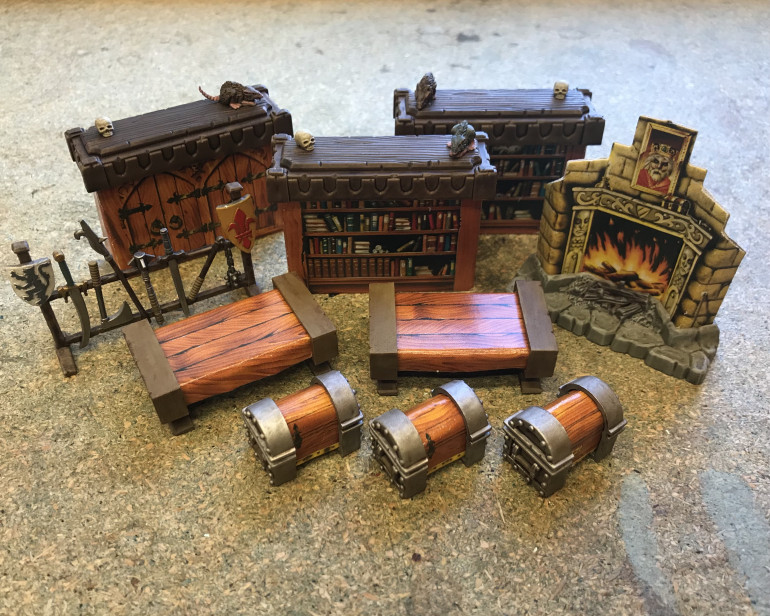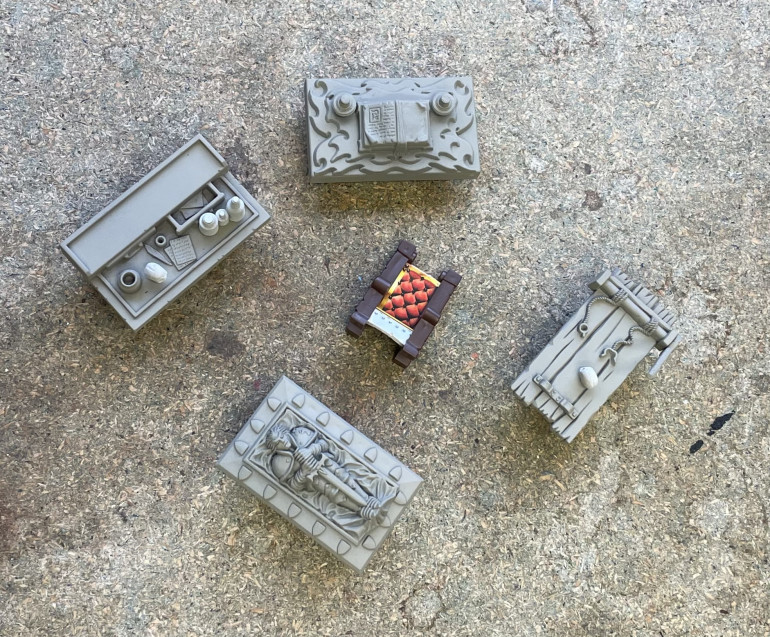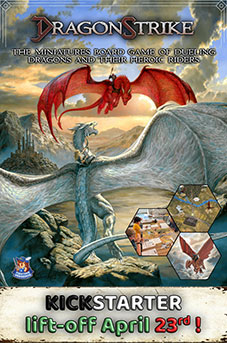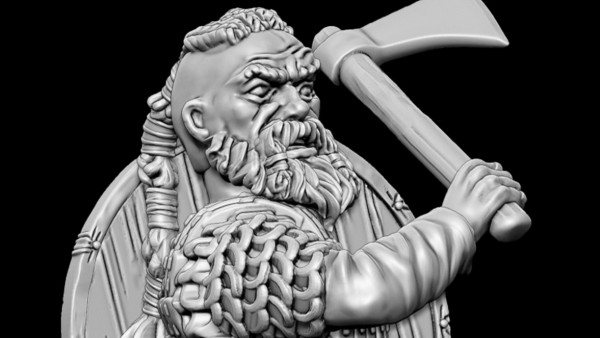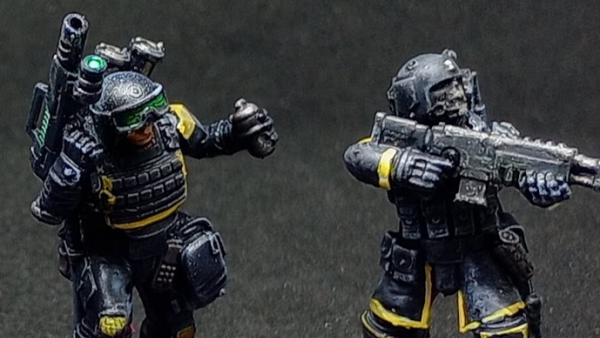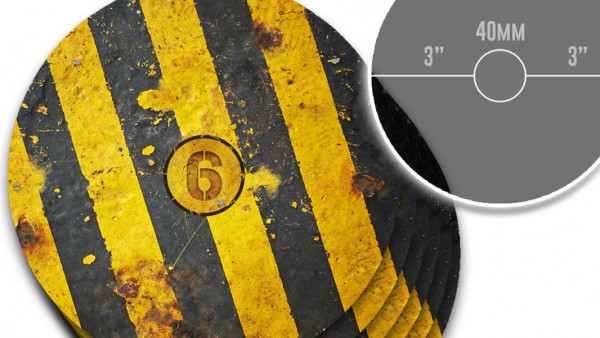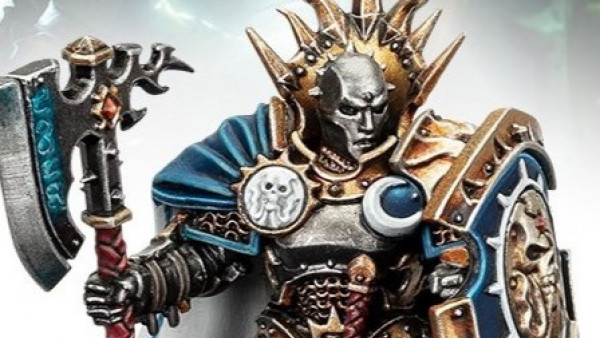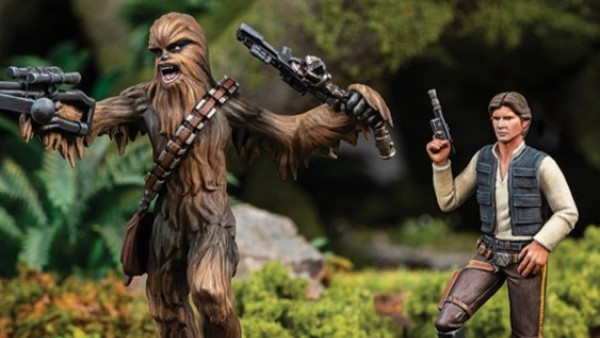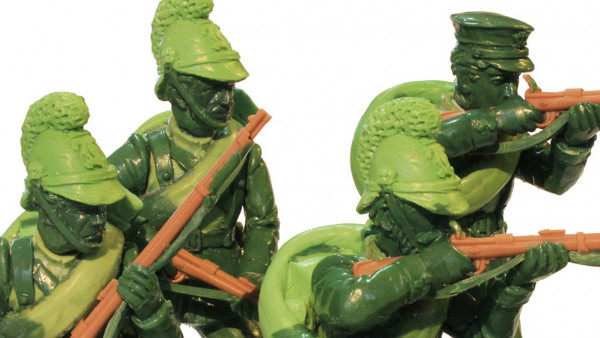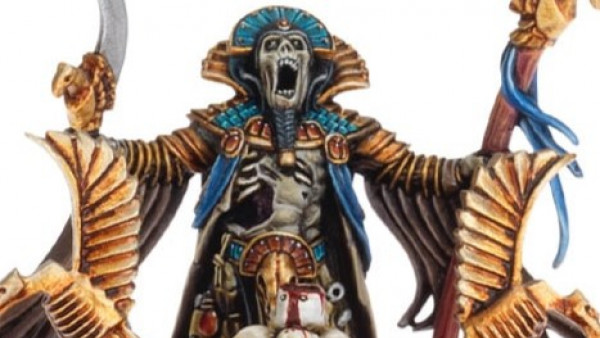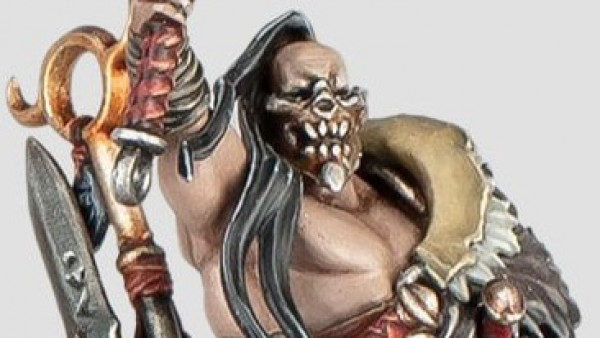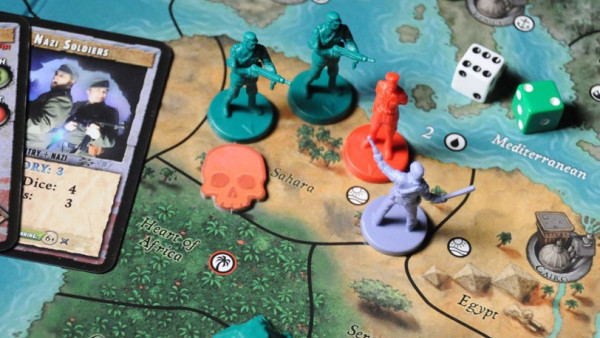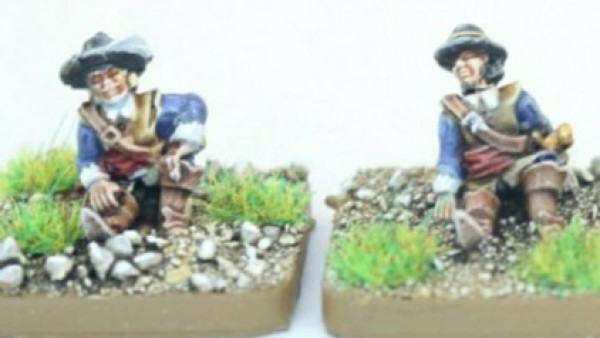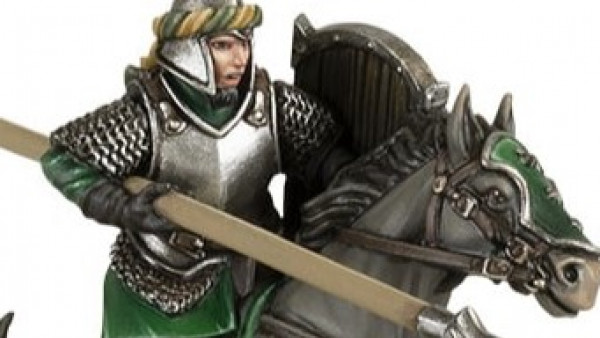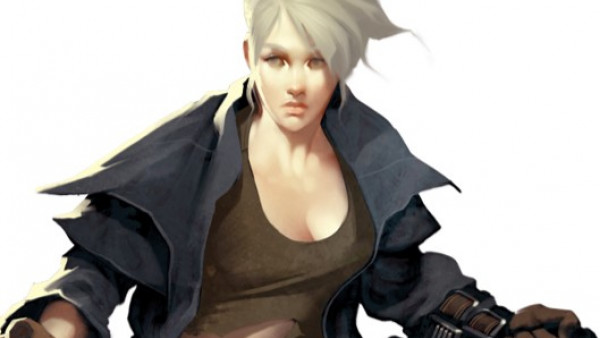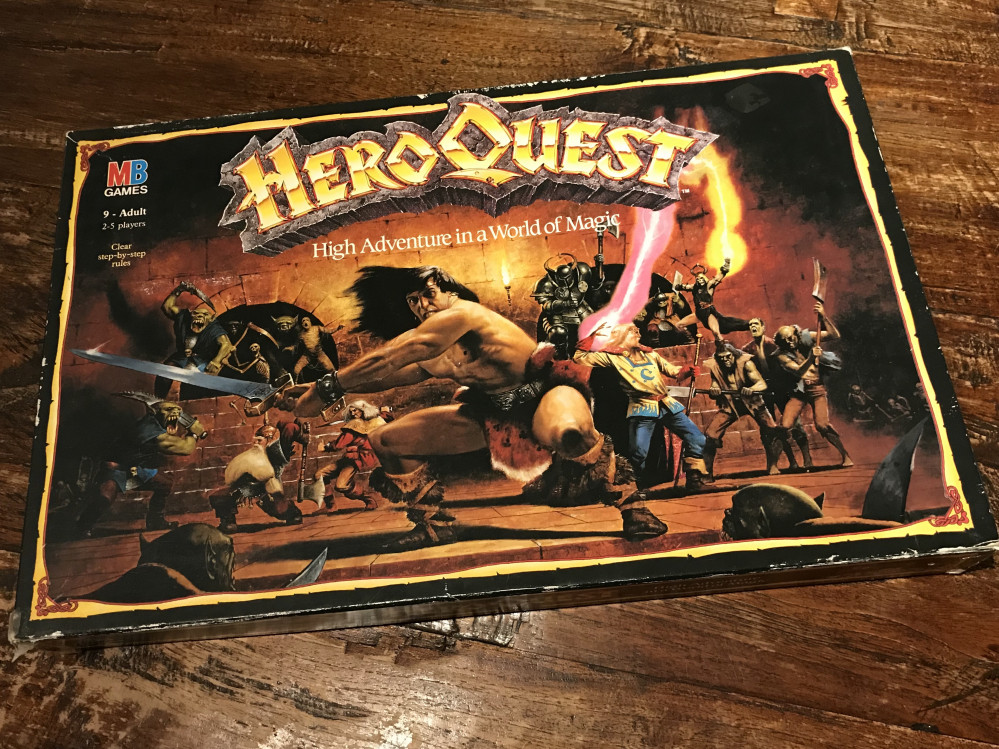
HeroQuest Lockdown Revisited
Recommendations: 340
About the Project
Like many gamers of my generation, HeroQuest by GW and MB games was the first miniatures game I owned. Sadly my own copy has long since been lost to time but as the nation began to move into lockdown, I bit the bullet and picked up a copy from a seller on eBay.
Related Game: HeroQuest
Related Company: Games Workshop
Related Genre: Fantasy
Related Contest: Dungeonalia 2023
This Project is Active
What’s in the box?
I had been searching eBay on and off for a decent copy of HeroQuest for a few months. This had begun after a colleague had come in on a Monday morning, telling me he had found his old copy in his parents loft. In that time I had seen full sets sell for in excess of £75 and wasn’t really prepared to spend that kind of money on a whim. However as lockdown was announced I started thinking about things I could do with my kids and decided to take another look for this classic game. I put a bid on a set that was listed as incomplete. From the images and description, it didn’t seem to be missing much so I decided to take a gamble.
To my surprise I won the auction for less than my maximum bid. When it arrived a few days later, I was pleasantly surprised to find that the set was in really good condition. The only models that were missing were an Ork, a Fimir and a Chaos Warrior… The Gargoyle was also missing it’s head!
The furniture was all there, although a couple of components were damaged or missing. This only amounted to one of the levers of the rack, a broken candlestick and missing base from the alter and some damage to the throne.
The set was also missing one of the movement dice and a few of the cardboard tokens. Most importantly, all of the cards were there and the board was in excellent condition.
A Dungeon Crawl down Memory Lane
The main reason I wanted a copy of this classic game was to play it with my children. As mentioned in the title, the deciding factor to get it now was the lockdown being enforced due to Covid 19. At the time of writing I am seven weeks into a period of being locked down at home and this game has been a real focus of the time I’ve spent with my kids. At 6 & 8 years old, they are a little under the “ages 9 to adult” guideline on the side of the box. However they have embraced this game in a way I would never have imagined. We have played the quest book cover to cover and most of the scenarios have now been played at least twice!
It was this enthusiasm for the game that lead me to utter those fateful words: “Shall I paint it?…”
Replacement Parts
Having done some research prior to buying a copy of the game, I knew that a lot of digital files for HeroQuest components existed online. So many files were available in fact that I had to do a fair amount of searching to find the exact components I needed. Some bright spark out there had the mind and capacity to scan each and every miniature from the set! I found the missing monsters (as well as variations on the originals with new weapons, bases etc). These would be printed on my resin printer.
The above images show the digital models positioned on my print bread (along with supports), ready for printing. I had noticed that my wizard was missing the top of his staff and so I decided to print a replacement for him while I was printing the missing monsters.
The above photos show the replacement models, fresh from the printer and after curing.
Seven Days to Paint a Horde!
There are 35 miniatures in the standard Hero Quest game so I was undertaking a pretty big project. I knew that if I didn’t tackle it in one hit I would likely get distracted by something else and string it out for years to come. I decided the best approach would be to get the biggest jobs done first so that things would get easier and more enjoyable as I went on.
For me this meant starting with the monsters, who for the most part consist of multiples of the same sculpt. I would work through the hoard before taking a little more time over the individual heroes.
Setting the Gargoyle and Chaos Sorcerer model aside with the heroes, I began by priming the monsters. The Orks, Fimir and Goblins (known collectively as the Green Monsters), were sprayed with a Kahki primer from Halfords. The ‘White’ monsters (Skeletons, Zombies and Mummies), were sprayed with GW Wraithbone. The Chaos Warriors were sprayed with Lead Belcher.
I wanted to get the set painted as quickly as I could so I set myself the slightly ambitious task of painting one monster type each evening! I had planned to begin with the Orks as they were the biggest group, eight in total. It made sense to get them behind me but at the last minute I chickened out and went with the Six Goblins instead!
In some way I think my guilt must have played on my mind as once I was under way I found myself adding the three Fimir to the painting table. Rather than finishing one of the monster groups that night, as planned, I split my time over two.
On my second night of painting I finished up the Goblins and Fimir and made a start on the Skeletons. I was actually getting ahead of schedule!
Undead and Chaos Warriors
The skeletons were very simple to colour. Having already primed them Wraithbone I used Skeleton Hoard contrast paint, followed by a light Wraithbone dry brush. I finished up with an Agrax wash to age the highlights and further deepen the shadows. In a similar vein I used a Nuln oil wash on the Chaos Warriors, followed by a Drakenhof Nightshade wash. This combination gives a nice burnished look to the plate armour. Once the washes were fully dried a Lead Belcher dry brush brought back some shine to the edges. These two groups of monsters were really quick to paint and I had them both finished by the end of my third painting session.
I had managed to get a full day ahead of schedule and now had the two smallest groups of monsters to work on. There are only two Mummies and two Zombies in the set. I used Rotting Flesh on what little skin could be seen on the Mummies. I then gave the whole model a coat of Skeleton Hoard. I reapplied Rotting Flesh to the raised areas of skin and was happy to leave it at that. As the mummies has been so quick to complete I made a start on the Zombies. Their skin was also done with Rotting Flesh and I used contrast paints on their ragged shirts and trousers.
I finished the Zombies the following evening and gave myself a break. I still wasn’t ready to face the biggest challenge, painting the Orks.
Painting the Green skins
I had put them off for as long as I could but it was time to tackle the Orks. I knew they would take longer than the other monsters, not least due to their number but also the amount of clothing and additional detail.
I had already experimented with using the contrast paint: Warp Lighting on the flesh of the Goblins and Fimir. After some initial doubts, I had been happy with the results.
Working directly over the kahki primer I used the Contrast paint, Warp Lightning followed by a Thraka Green wash to create the Orks skin tone. (The Fimir I had done previously had been given a Drakenhof Nightshade wash to make them a darker, bluish green while the Goblins were just Warp Lightning, making them lighter than both the Fimir and Orks).
To create some colour variation between the duplicate models I did the first four with tan jackets. This was achieved by using Skeleton Hoard Contrast directly over the kahki primer.
The next three were given blue jackets painted in Talassar Blue. (Three of the Goblins had previously been done in this colour).
The final Ork is the one with the larger sword. As he acts as an Ork ‘Boss’ for some of the Quests, I wanted him to be easily distinguishable from his lesser cousins. He was given a Contrast Blood Angels Red jacket. (This was also the colour used on three of the Goblins).
I used the contrast paint Wyldwood on the boots and belts. The chain mail and weapons were done in Lead Belcher and I used a combination of Gehenna’s Gold, Balthazar Gold and Warplock Bronze on hilts and buckles. The blades of the weapons and the chainmail were washed with Nuln oil. All of the clothing and metallic elements were then given a wash of Agrax Earthshade.
The Orks were worked on over two nights, making them by far the slowest monster type to complete. However as I had managed to get a day ahead earlier in the week I still managed to hit my seven day target!
Soft Tone and Matt Varnish
Now the monsters were painted it was time to keep them safe from little fingers with a coat of Army Painter Quickshade. I use this mainly as a varnish to protect the paint but it is also a great way of adding additional shading to the miniature. I only ever use Soft Tone (Mid and Dark tone are also available), as I tend to use lots of washes in my painting already. Although the instructions on the tin tell you to “dip” your miniature before leaving it to dry, I was advised to apply the Quickshade with a brush for greater control and a thinner coat. I’ve always done it that way and had been happy with the results.
All of the monsters were given a coat of Soft Tone and left to dry for 24 hours. This meant no HeroQuest for a whole evening! The boys were very disappointed with me for not factoring this into the gaming schedule.
Once the soft tone had dried I gave everything a coat of Vallejo Matt Varnish. This takes away the nasty shine as well as offering another layer of protection.
With the bulk of the set completed, I could turn my attention to the individual models.
The Gargoyle
I mentioned in an earlier entry that the Gargoyle was missing his head. This did nothing to improve his looks and had to be amended before I could get to painting him.
While I had been searching for the other missing monsters I had downloaded an STL file for a complete Gargoyle. I wanted to use as much of the original set as possible so I decided I would just print the head to graft to the existing body. As a separate head file wasn’t available, I used Zbrush to make some modifications.
Once I had imported the file to Zbrush I isolated the head and deleted the body. I hadn’t previously noticed that one of the horns was missing its tip so I took the opportunity to make some adjustments. I cloned the horn on the other side and mirrored it, in order to create an authentic replacement. I then subdivided the model a couple of times to enhance the detail which would improve the sharpness of the print. I also put a hole in the back of the head which would allow me to attach it to the post on the body.
Below is a picture of the head straight off the printer. The supports were placed at the back to make for an easy clean up.
With the head attached and the model primed he was starting to look a lot more menacing….
After conferring with the boys it was decided that our Gargoyle would be painted to match the screen art, rather than the card art. This was very convenient for me as I only had to paint him to look like stone. It felt like a bit of a cop out but I consoled myself with the fact that I had just painted 29 monsters in seven days!
This was a very simple paint job using a base of Kings or War – Green Grey. I used an all over wash of Agrax followed by a selective wash of Nuln oil on the Wing tips and a few other places (such as the mouth and hands, to enhance the detail). Finally a dry brush of Screaming Skull finished the job. This photo was taken after Soft Tone and Matt Varnish.
The Chaos Sorcerer
It was almost ready to paint the heroes but before I did there was one villain left. The Chaos Sorcerer mode, aka Prince Ragnar, aka The Witch Lord is used to represent a number of different characters throughout the game and so does not have a card like the other monsters. Looking to the screen art again for inspiration we felt like this colour scheme was a good place to start.
I didn’t like the idea of a muscle bound hero with a skull face so instead I decided to paint it as though it was the faceplate of his helmet. I have no idea if this was the sculptors intention but the idea of a more elaborate helmet than the Chaos Warriors serving under him seemed appropriate.
The flesh was done with Kislev Flesh, washed with Ogryn Flesh wash and highlighted with a mix of Kislev Flesh and Vallejo Light Flesh. The robes were just painted Kantor Blue and washed down with Nuln Oil.
The Barbarian
It was finally time to tackle the Heroes. I chose the Barbarian to begin with, partly because he is the simplest to paint but also because he is my 6 year olds favourite character. My intention with all of the heroes was to achieve a look comparable to the player board art.
For the Barbarian’s skin I used a mix of GW Kislev Flesh and Vallejo Basic Skin Tone. This was given a wash of Ogryn Flesh before highlights were applied with another mix of the flesh colours, this time favouring the Basic Skin Tone. Pure Basic Skin Tone was used for the most raised areas, such as the nose and cheeks. I used German Camo Medium Brown from Vallejo on the hair. This was subsequently washed with several layers of null oil.
The boots and fur pants were painted Vallejo Leather Brown and washed with a thinner down mix of Wyldwood Contrast paint.
This picture was taken after Soft Tone and Matt Varnish and I’m slightly regretting the use of Soft Tone on the skin areas. It has left the skin looking quite grubby which is probably ok for a guy in a dungeon but not what I was aiming for!
The Elf
The Elf has always been my favourite of the hero models and is the hero I prefer to play. He may well have been the first miniature I ever painted as he was one of just three that I got around to painting from my original set.
The Elf’s colour scheme is pretty simple and was mostly done using the contrasts paints I have been using throughout this project. Working straight over the Khaki primer I used Blood Angels Red for his jerkin and Skeleton Hoard for the trousers and lapels. The boots were painted Vallejo German Camo Medium Brown and the satchel Flat Brown before both were given a thinned down coat of Wyldwood.
The hair was simply painted skull white followed by Apothecary White. I wanted a paler skin tone for the Elf so I used a mix of the Vallejo skin tones Light Flesh and Brown Rose. It was at this point I noticed the damage to the Elf’s nose. It appears to have been squashed or ground down in some way. I will have to revisit this in the future with a file and some green stuff as an Elf with a flat nose just won’t do!
The Wizard
The Wizard has a little more variation to his colour scheme than the other heroes and required the most time to complete.
Of the four hero models, the Wizard had always been my least favourite. However once I settled down to paint him I found the miniature really grew on me, with some nice detailing and fabric work, particularly on his tunic.
I used Hoeth Blue for the trousers and collar, with Wraithbone for the rest of the tunic. A Drakenhof Nightshade wash over the trousers and a heavily thinned Skeleton Hoard over the tunic added some shading. Again I used the Blood Angels contrast on the gloves, applying it directly over the kahki. I really like the muted red this technique achieves and have used it on lots of the minis in this project. The belt and boots were painted with Vallejo Flat Brown with followed by an Agrax wash. For the hair I used Vallejo Medium Flesh Tone (Which is very yellow for a flesh tone), followed by an Agrax Wash. More of the Flesh tone was applied to the raised areas once the wash had dried. The skin was a Kislev Flesh and Vallejo Pale Flesh mix, highlighted up to Pale Flesh.
All that was left to do was the cloak but I didn’t have a single purple paint in my collection! Not wanting to stray from the original colour scheme I mixed the Blood Angels Contrast with the Talassar Blue Contrast and applied it directly over the khaki. The result was pretty close to the board art.
The Dwarf
I always felt this guy must have been based on the White Dwarf or possibly the other way around? I’m not sure when he started appearing on the magazine. In any event he is a great little model, arguably the best model in the set.
As with the other miniatures the Dwarf doesn’t have quite the level of detail depicted on the player board. I matched the colours as best I could but most of this model would be done with metallics.
I painted the helmet, chain mail and axe with Lead Belcher. The shoulder pads and helmet crest were done with Dwarf Bronze. All the metallics were then washed down with Nuln Oil before a dry brush of Runefang Steel was applied to the silver areas. The bronze areas had the Dwarf Bronze reapplied. The Axe then had a selective wash of Agrax Earthshade to give the impression it had been well used!
For the boots and gloves I painted Wyldwood contrast directly over the Khaki primer, while what little fabric can be seen at the elbows and hem of his jacket were Skeleton Hoard. These areas were also given a wash of Agrax Earthshade. The beard and eyebrows were painted Screaming Skull and given a thinned down wash of Agrax, then dry rushed back to Screaming Skull. I wanted a slightly ruddier complexion for the Dwarf so I used Vallejo Brown Rose flesh paint with a little Kislev flesh mixed to taste. I intentionally left his nose almost pure Brown Rose! As with the other heroes this was given a wash of Ogryn Flesh.
All the heroes were given the same Soft Tone and Matt Varnish treatment as the monsters and this certainly enhanced the shading and gave a nice, resilient finish.
With the last of the heroes done the miniatures from the set are complete. I’m taking a break to work on some other projects for a bit but I’m planning to come back to this project when I get around to printing and painting some of the missing furniture elements.
Lockdown 2 - Starting the Furniture
It had been a while since we had played but during the winter lockdown Heroquest made its way back to the tabletop.
It had been my intention to address the Furniture at some point. Now seeing the panted miniatures moving around the unpainted scenery, I decided it was time to make a start.
Some of the scenery elements were damaged or missing parts so I decided to tackle the u damaged ones first, in order to make headway as quickly as possible. Here we have the Wardrobe and Bookshelves, the two Tables, three Treasure Chests, Fireplace and Weapons Rack. They were primed in the same khaki primer I had used for many of the heroes and monsters.
I wasn’t planning on spending much time on these pieces and jumped straight in with contrast Skeleton Hoard and Wildwood for the wooden areas. Iron breaker was used for the metals.
Skeleton hoard followed by a Screming skull dry brush was used on the skulls. The rats legs were picked out in Vallejo flesh tones before Wildwood and Black Templar Contrast were used to colour the fur. The stones of the fireplace were painted Vallejo Green Grey before being washed with Agrax and Nuln Oil. A light screaming skull dry brush brought the details back and added a dryness to the stone.
Although the paint jobs were very basic, the pieces looked so much better once the cardboard components were back in place.
Revisiting an old project!
Whilst redecorating our bedroom I found my Heroquest box safely wrapped in an IKEA bag beneath my wardrobe. It had been a couple of years since it had seen the light of day and checking through the contents I was reminded that I still had a few items unfinished. With Dungeonalia dominating the OTT feed I took this as a serendipitous discovery and vowed I would finally get this project finished!
The Throne, Altar, Tomb, Rack and Alchemists Bench, were the only pieces that were left unpainted and this was largely due to them being incomplete. I had recently seen a post by Warzan linking to some really good 3D printable alternatives. However I decided I wanted to keep this set as original as I could and that I would stick with incomplete, rather than replacement parts.





























